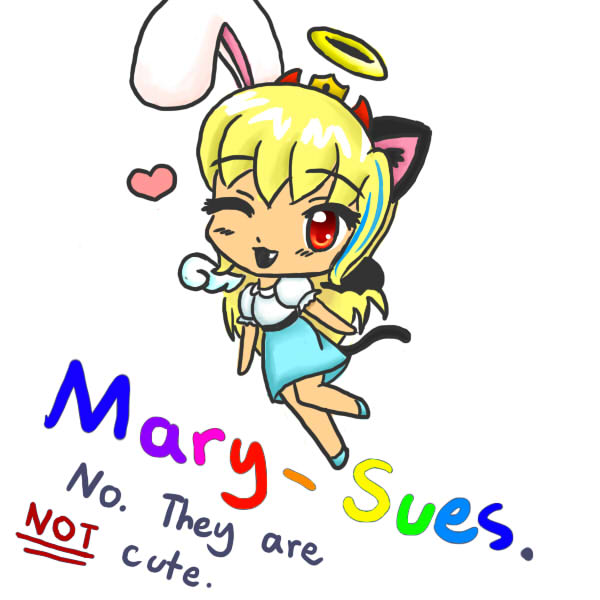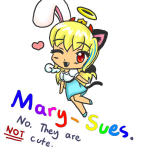
Writing Pitfall #6: Mary Sue
 Writing Pitfall #6: Mary Sue
Writing Pitfall #6: Mary Sue
Reposted with permission from Write Divas
As a first-time author, the level of relief and accomplishment matches only your excitement when you turn in your manuscript after weeks and months of writing. So imagine for a moment that your editor returns it with a big, red note on it that says “Get rid of Mary Sue!”
Your first reaction, like any new writer, is probably confusion. “There’s no character named Mary Sue in my manuscript.” Before you panic, thinking your editor has mixed up manuscripts and maybe yours wasn’t even read, take a deep breath and relax. Your editor hasn’t mixed up your manuscript with another, she is simply telling you that you have a type of character—known as Mary Sue—within your story… and she needs some work.
What exactly is a Mary Sue? The term itself is taken from a 1973 Star Trek fan fiction parody in which Mary Sue, a fifteen-year-old girl, is the smartest and youngest girl ever to graduate from Starfleet Academy. She ingratiates herself with the crew—everyone likes her—and she shows a ridiculous amount of skill at just about everything. The term Mary Sue began to characterize young, female protagonists who are connected to the predominant male characters, either romantically or as family, and are the prettiest, the smartest, the most athletic—you name a positive superlative and she’s it. Her powers not only outshine everyone else’s but usually they are unbelievable in nature and unlimited in scope. Everyone loves Mary Sue; she is the best friend, the nicest girlfriend, the most amazing daughter, and all the other characters pale in comparison.
Over time, the concept of Mary Sue took on the additional meaning of author self-insertion, not in a literal manner, but in wish-fulfillment form—she is everything the author has ever wanted to be, with none of the negative character traits that all humans possess. If she does possess any negative character traits, they can usually be attributed to a misunderstanding, their existence is a
plot device and she’s faking it, or they’re meant to be endearing. Mary Sue usually has a dramatic history, which only makes her more interesting to the rest of the characters, and she is able to befriend the unfriendly, reform the criminal, and solve all the world’s problems. This makes Mary Sue a caricature, not a truly developed character, and is why most editors will tell you to get rid of her.
Of course, female characters aren’t alone in this concept. The term Marty Stu or Gary Stu soon popped up to identify male protagonists who follow the same criteria. They are the star athletes, the bravest of heroes, the richest and most powerful businessmen, and they succeed at everything they do. They are the idealized character.
But don’t worry—you don’t have to actually kill off Mary Sue. She just needs a little touch of reality. Or a big touch; it depends on how perfect she is. Is she so perfect that, in reality, she’d annoy most people? Do her physical abilities test the limits of science, nature, and common sense? Is she so pretty that everyone stops and stares? Is she a straight-A student, the best worker in the company, the person everyone turns to for help? These are some things to consider when working on Mary Sue. Sure, she’s pretty, but maybe she has self-confidence issues. She might be a good student who studies for hours, having struggled with similar subjects in the past. She’s a leader, but maybe she’s not so patient with others who need help.
In order to remove Mary Sue, you should look to the nature of people. No one person is one hundred percent good or bad. Everyone has faults, minor or major, that affect the way they live and the things they do. Consider your character—what are her faults? What drives her to be the way she is, feel the way she feels, and make the choices she makes? Does she keep things inside, giving others the impression of calm, while she’s a powder keg waiting to explode? Do others see her true character?
Once you start asking yourself these questions, you’ll find that you can turn Mary Sue back into the three-dimensional character you really want in your story.